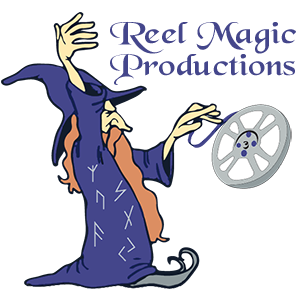REEL MAGIC PRODUCTIONS is an independent film and television (traditional and new media) production company focusing on small-budget, script-driven projects.
We believe that the most important part of any film or television project is a good story. That while computer generated effects, green screens and voice modulation, just as a fork, shovel and band saw are all valuable tools, each serves a purpose at the proper time and place. However, seldom, if ever, do they actually belong at the same table.
The management of Reel Magic Productions has determined that producing films in the 1-3 million dollar range make the most sense if our goal is to have a profitable slate of films.
Here is why:
From the 1920s through the early 2000s, most of the “studios” averaged 25-35 films per year. During the transition years from about 1912 through 1920 and than again from 1927 (The Jazz Singer) through the depression, several producers allegedly said that they would make a “movie a week,” often at a cost of $1-3,000. The median income at that time was approximately $700 thereby making the average film approximately 4 times the average annual income. By the 1970’s the average film cost was approximately 2.5-4 million dollars which was approximately 200 times the median income of $12,000.
Still, the studios could afford to make 20-30 films each per year as the internet, satellite television and on demand viewing were yet to come, thereby taking huge bites out of the expendable income dollars.
From 2000-2010, the average cost of a studio film jumped from 20 million dollars to over 125 million dollars with 200 million plus dollar films not being unheard of. This represents an increase to over 4000 times the median income with fewer people going to the movies. A 1970’s matinee that cost 50 cents and included a soda and popcorn was now $10.00 with an extra $12 for the soda and popcorn. While the median income had gone up 4-5 times, the entertainment cost had gone up 20-30 times.
There is a saying in the film community, “You can make any movie for a million dollars, you can make the same movie for 100 million, and generally the only difference is the quality of craft services.”
While this may be an over simplification, it is true.
It may be true that the 10 million dollar actor brings more experience and an unguaranteed bigger box office draw. However, they also bring more baggage and attitude than the $50,000 actor, and in today’s new media age it takes too many downloads or too many tickets to make up for that $9,950.000 difference. (Also, the hungry actor doesn’t have 10 pages of “riders” in their contract that cost you an extra 3 million dollars). We don’t believe it is worth the difference.
Additionally, the “deals” cut during larger budget productions generally include points, profits and payouts to everyone involved in the project except the investor. These deals also often dictate how, when and where a project will be projected/viewed.
By doing smaller budget, more flexible projects, we will not be forced into making “deals,” thereby allowing us to take advantage of the fluid nature of the business by being able to offer theatrical, television and new media/internet availability of each of our products as the market dictates and the consumer demands.



